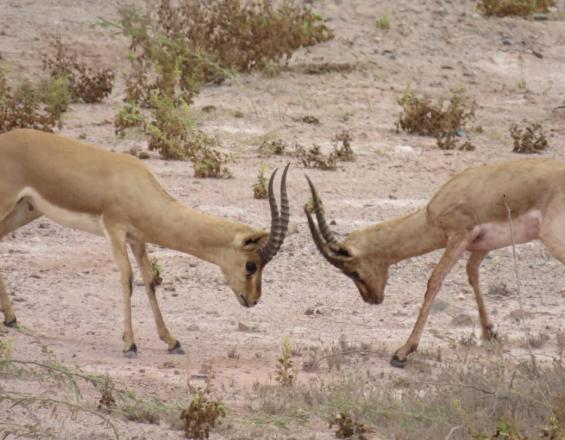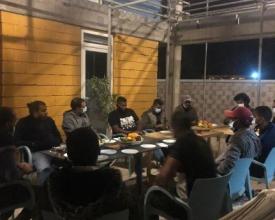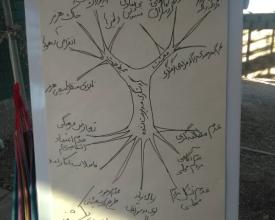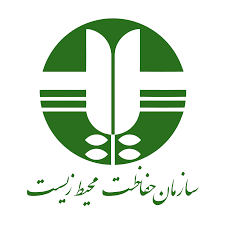
Conservation des gazelles de Jabir par une approche de gestion intégrée sur l'île d'Hormuz, Iran

Le projet de conservation des gazelles sur l'île d'Hormuz fait partie d'un plan directeur plus large, le plan de développement de la présence sur l'île d'Hormuz. L'objectif est de gérer la présence des touristes, leur interaction avec la communauté locale et leur impact sur l'écosystème fragile de l'île.
La population de gazelles à Hormuz a considérablement diminué au cours des dernières années. L'augmentation de la population de chiens sauvages en tant qu'espèces invasives en est l'une des causes principales. Après des réunions avec des activistes locaux et les autorités gouvernementales au début de l'année 2020, il a été décidé que les chiens seraient capturés dans la nature. Des boîtes de capture ont donc été conçues et une école inoccupée a été transformée en clinique vétérinaire.
Des volontaires locaux ont capturé 40 chiens (75% de la population estimée) qui ont ensuite été stérilisés et étiquetés avec l'aide d'un vétérinaire bénévole. Parallèlement, la surveillance et l'approvisionnement en eau et en fourrage ont été assurés avec l'aide de Majara et d'activistes locaux.
Impacts
- Développement d'un processus intégré et multipartite pour la mise en œuvre de solutions environnementales sur l'île d'Ormuz.
- Amélioration de la biodiversité de l'île en éliminant la menace que représentent les chiens sauvages pour la biodiversité en tant que population invasive, grâce à la capture et à la stérilisation.
- Influence de l'attitude de la communauté locale à l'égard de la biodiversité grâce à la participation de la communauté à la prise de décision, à l'action et au suivi.
- Création d'un réseau de communautés locales, de secteurs privés et d'autorités gouvernementales pour coopérer au développement d'un tourisme durable sur l'île.
- Création de HormozBoom, HormozKaar et HormozYaar pour faciliter l'amélioration de la biodiversité, des moyens de subsistance et de l'éducation sur l'île, respectivement.
- Lancement de projets en cours tels que l'enregistrement de la biodiversité de l'île, des excursions pilotes d'observation des oiseaux et la gestion intégrée des déchets avec la participation d'écolodges partenaires.
- Mise en place d'une approche véritablement holistique pour guider la conservation et le développement durable de l'île d'Ormuz.





